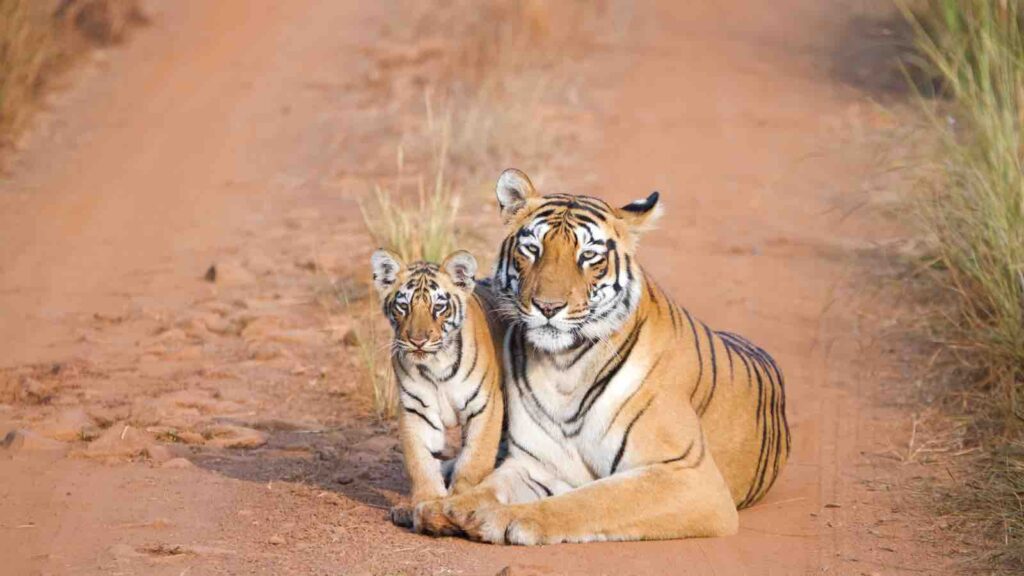India’s tiger count has soared from 1,706 in 2010 to 3,682 in 2022, now making up 75% of the global tiger population.
India has achieved what many conservationists once thought impossible: doubling its wild tiger population in just over a decade. Against the backdrop of the world’s highest human density and rapid urbanization, India’s tiger count has soared from 1,706 in 2010 to 3,682 in 2022, now making up 75% of the global tiger population.
RELEVANT SUSTAINABLE GOALS


This remarkable recovery, detailed in a new study published in Science, defies conventional wisdom that large predators cannot survive alongside dense human populations. Tigers now inhabit 138,200 square kilometers—an area half the size of the United Kingdom—while coexisting with nearly 60 million people. The study’s authors argue that coexistence, not separation, has been key to this success—but they also caution that economic prosperity, conservation efforts, and political stability all play a crucial role in determining where tigers thrive or vanish.
The Economics of Coexistence
While tiger populations have flourished in regions with stable economies and conservation support, they have disappeared from areas plagued by poaching, armed conflict, and extreme poverty. In states like Madhya Pradesh, Maharashtra, Uttarakhand, and Karnataka, where tiger-related tourism thrives, local communities benefit from government compensation for livestock losses and increased employment opportunities. Farmers, instead of retaliating against tigers, have adapted by keeping their cattle in enclosures.
But in regions such as Odisha, Chhattisgarh, and Jharkhand, where bushmeat hunting and insurgencies persist, tigers have been wiped out. These areas also rank among India’s poorest districts, highlighting the complex relationship between poverty, conservation, and land-use pressures.
“We think human densities are detrimental to the conservation of large carnivores, but more than density, it is the attitude of people that matters,” said lead author Yadvendradev Vikramsinh Jhala. He pointed to Malaysia, where tiger populations have not recovered despite lower population densities and greater economic wealth.
Can India’s Model Work for the World?
The Indian model of tiger recovery offers valuable lessons for other nations grappling with large carnivore conservation. In Europe, where wolves are making a comeback, farmers have pushed back against their presence. Study coauthor Ninad Mungi suggests that India’s success in integrating tigers into human landscapes could provide a template for coexistence strategies globally.
However, conservation efforts must walk a fine line. Economic prosperity has enabled tiger recovery, but unchecked development also threatens habitats. India’s tiger range has expanded by 30% since 2006, but rapid land-use changes could reverse these gains.
“Tiger recovery is constrained at opposite ends of the socioeconomic spectrum—by intensive urbanization and by poverty,” the researchers note.
The Role of Conflict in Tiger Extinction
One of the study’s most striking findings is that armed conflict significantly increases the risk of tiger extinction. Globally, wildlife declines have often coincided with political instability. In India, tiger populations have been decimated in areas affected by Maoist insurgencies, particularly in Chhattisgarh and Jharkhand.
Historical evidence from Manas National Park in India and Nepal’s rhino habitats shows that whenever conflict disrupts governance, poaching surges, and wildlife disappears. However, reserves where insurgencies have been contained—such as Nagarjunsagar-Srisailam and Similipal—have shown promising signs of tiger recovery.
As India’s tiger population grows, so too does human-wildlife conflict. Every year, 35 people die in tiger attacks, 150 from leopards, and thousands more from snake bites and wild pigs. Yet, 150,000 people also die in car accidents annually—a number that rarely makes headlines.
“Two hundred years ago, human deaths from predators were a normal part of mortality. Today, they are abnormal, which is why they get attention,” Jhala explains.
With India’s success, the next challenge is to balance conservation with human safety, ensuring that growing tiger populations remain an asset, not a liability.
Restoring Lost Habitats and the Future of Big Cats
While India’s tiger recovery is a conservation success, 157,000 square kilometers of tiger habitat remain empty. The researchers estimate that with reintroductions and better habitat connectivity, at least 10,000 square kilometers could be restored.
The study presents two contrasting strategies for conservation:
- Land Sparing: Keeping human populations separate from large predators.
- Land Sharing: Encouraging coexistence between wildlife and people.
Critics argue that land sharing leads to more human-wildlife conflict, while land sparing is impractical in densely populated countries like India. The study concludes that both approaches are necessary, depending on regional conditions and socioeconomic factors.
India’s conservation success challenges long-held beliefs about how humans and large predators can coexist. By combining legal protection, economic incentives, and local engagement, India has created a model that other nations may adapt for their own conservation efforts.
Lead image courtesy of Rajkumar Natarajan from Getty Images (Indian Tiger with Cub)
You may also be interested in :
Conservation Efforts Prove Effective in Reversing Biodiversity Loss, Landmark Study finds




